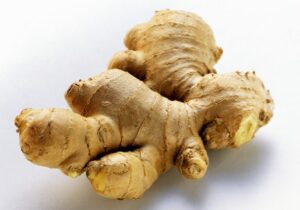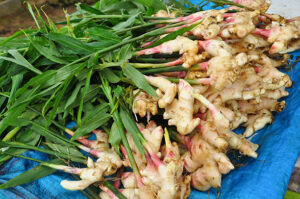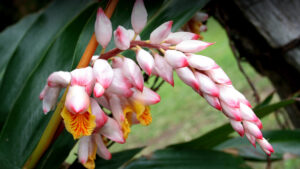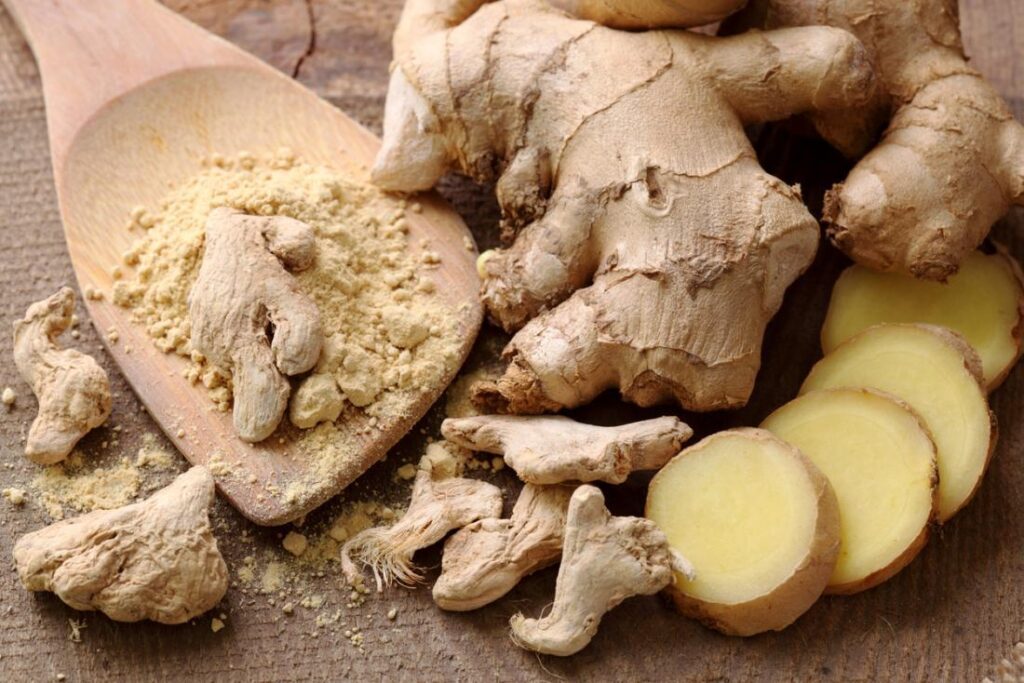Ayurvedic
Sunthi (Zingiber officinale) Herb Ayurvedic Overview
Sunthi (Zingiber officinale), the spice has been utilized for ages in practically all systems of medications against various diseases. In Ayurveda, its uses are mentioned in old content like Charaka Samhita, Sushruta Samhita, Vagbhatta, and Chakra-dutta. It has a spicy fragrance and it is because of the presence of ketones, particularly the gingerols, which come out to be the essential phytochemical constituent of ginger. Spices and Herbs play an important role in our everyday life. From ancient times, medicinal herbs are considered the principal line of treatment around the world, and over 80 – 85% of the population taking them for major and minor sicknesses.
The main producers of ginger are Cameroon, China, Costa Rica, Fiji, Ghana, Australia, Brazil, Bangladesh, Guatemala, Hawaii, India, Indonesia, Jamaica, Mauritius, Malaysia, Nepal, New Zealand, Nigeria, Philippines. Zingiber officinale is associated with multiple medicinal properties like analgesic, anti-oxidant anti-diabetic, anti-microbial, hepatoprotective, immunomodulatory, nephroprotective, neuroprotective, etc. Due to its properties, the herb can be used in multiple health issues like joint pain, cramps, sore throat, stiffness, muscle pain, vomiting, obstruction, heartburn, hypertension, etc.
Table of Contents
Scientific Classification of Sunthi (Zingiber officinale):
- Kingdom: Plantae
- Phyllum: Spermatophyta
- Subphyllum: Angiospermae
- Division: Angiospermae
- Class: Monocotyledoneae
- Order: Zingiberales
- Family: Zingiberaceae
- Genus: Zingiber
- Species: Z. Officinale
- Common name: Ginger
Sunthi (Zingiber officinale) Synonyms:
- Sanskrit: Ausadha, Muhausadha, Nagara, Visva, Visvabhesaja, Visvauasadha
- Assamese: Adasuth, Aadar Shuth
- Bengali: Suntha, Sunthi
- English: Ginger root, Ginger
- Gujrati: Sunth, Sundh, Suntha

- Hindi: Sonth
- Kannada: Shunthi
- Kashmiri: Shonth
- Malayalam: Chukku
- Marathi: Sunth
- Oriya: Sunthi
- Punjabi: Sund
- Tamil: Sukku, Chukku
- Telugu: Sonthi, Sunti
- Urdu: Sonth, Zanjabeel
Sunthi (Zingiber officinale) Description:
 Macroscopic: The rhizome of sunthi is literally compressed bearing ovate, short, flattish, oblique branches on the upper side each having at its apex, pieces about 5-15 cm long, 1.5-6.5 cm wide, and 1-1.5 cm thick. Externally buff-colored showing longitudinal striations and occasional loose fibers, fracture short, smooth, transverse surface exhibiting narrow cortex, a well-marked endodermis and a wide stele showing numerous scattered fibro-vascular bundles and yellow secreting cells, odor agreeable and aromatic, taste, agreeable, and pungent.
Macroscopic: The rhizome of sunthi is literally compressed bearing ovate, short, flattish, oblique branches on the upper side each having at its apex, pieces about 5-15 cm long, 1.5-6.5 cm wide, and 1-1.5 cm thick. Externally buff-colored showing longitudinal striations and occasional loose fibers, fracture short, smooth, transverse surface exhibiting narrow cortex, a well-marked endodermis and a wide stele showing numerous scattered fibro-vascular bundles and yellow secreting cells, odor agreeable and aromatic, taste, agreeable, and pungent.
 Microscopic: The transverse section of the rhizome shows the cortex of isodiametric thin-walled parenchyma with scattered vascular strands and numerous isodiametric idioblasts of about 40-80 µ in diameter and containing a yellowish to reddish-brown oleo-resin. The endodermis is slightly thick-walled free from starch. The parenchyma cells are arranged radially around numerous scattered, collateral vascular bundles and each consisting of a few unlignified, thin-walled septate fibers up to about 30 µ wide and 600 µ long with the small oblique slit.
Microscopic: The transverse section of the rhizome shows the cortex of isodiametric thin-walled parenchyma with scattered vascular strands and numerous isodiametric idioblasts of about 40-80 µ in diameter and containing a yellowish to reddish-brown oleo-resin. The endodermis is slightly thick-walled free from starch. The parenchyma cells are arranged radially around numerous scattered, collateral vascular bundles and each consisting of a few unlignified, thin-walled septate fibers up to about 30 µ wide and 600 µ long with the small oblique slit.
The parenchyma of cortex and stele packed with rectangular, ovate, flattened, starch grains, mostly 5-15 µ – 30-60 µ long about 25 µ wide and 7 µ thick, marked by five transverse striations.
Identity, Purity, and Strength of Sunthi (Zingiber officinale):
- Foreign matter Not more than 1 percent, Appendix 2.2.
- Total Ash Not more than 6 percent, Appendix 2.3.
- Acid-insoluble ash Not more than 1.5 percent, Appendix 2.4.
- Alcohol-soluble extractive Not less than 3 percent, Appendix 2.6.
- Water-soluble extractive Not less than 10 percent, Appendix 2.7.
Chemical Constituents of Sunthi (Zingiber officinale):
Sunthi is rich in Essential oil, pungent constituents (Gingerol and Shogaol), resinous matter, starch, etc. The Seeds of Sunthi contains Ricinine, Ricine, and lipase enzyme. Oil is rich in Glycerides like recinoleic acid, oleic acid, linoleic acid, & stearic acid.
Other than this, it includes sesquiterpenoids [α-zingiberene (30–70%), β-sesquiphellandrene (15–20%), β-bisabolene (10– 15%), α-farnesene, zingiberol.
Ayurvedic Properties and Action of Sunthi (Zingiber officinale):
- Rasa : Katu
- Guna : Laghu, Snigdha
- Virya : Ushna
- Vipaka : Madhura
- Karma : Anulomana, Deepana, Pachana, Hrudya, Vatakaphahara, Ruchya, Bhedni
Ayurvedic Formulation made by Sunthi (Zingiber officinale):
Trikatu Churan, Saubhagya Shuti, Ardraka ghrita, Shothaghna lepa, Guladrakam, Maharasnadi Kwath, Amritarishta, Panchasakar Churna, Talishadi Churna.
Therapeutic Uses of Sunthi (Zingiber officinale):
Swasahara, Kasahara, Grahi, Varishya, Jwaraghan, Nadi uttejaka, Truptighana, Shoola prashamana, Shleshama hara, Arshoghana, Vedna sthapana.
Dose of Sunthi (Zingiber officinale):
1-2 gm of the drug in powder form.
Reference:
Ayurvedic Pharmacopeia of India.
For regular health updates, please follow our Social Pages


